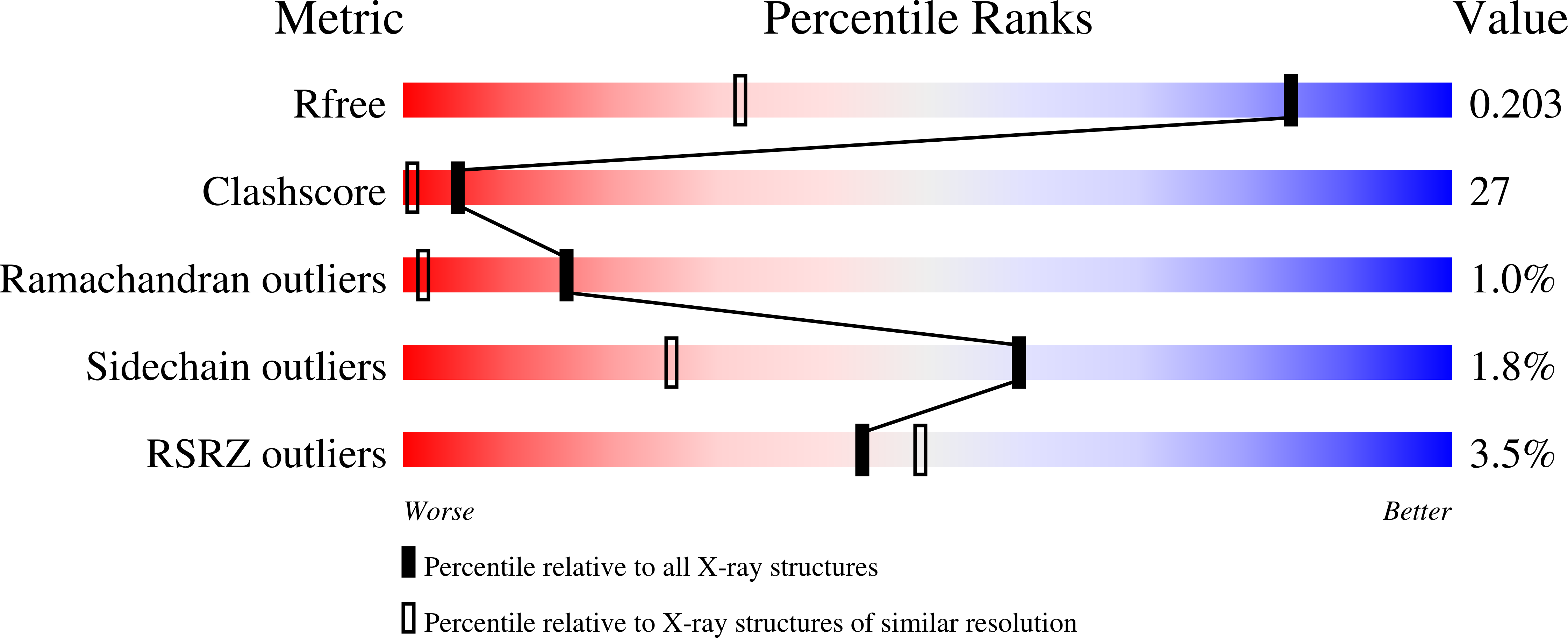Substituted Bis-THF Protease Inhibitors with Improved Potency against Highly Resistant Mature HIV-1 Protease PR20.
Agniswamy, J., Louis, J.M., Shen, C.H., Yashchuk, S., Ghosh, A.K., Weber, I.T.(2015) J Med Chem 58: 5088-5095
- PubMed: 26010498
- DOI: https://doi.org/10.1021/acs.jmedchem.5b00474
- Primary Citation of Related Structures:
4YE3, 4YHQ - PubMed Abstract:
An extremely drug resistant mutant of HIV-1 protease (PR) bearing 20 mutations (PR20) has been studied with two potent antiviral investigational inhibitors. GRL-5010A and GRL-4410A were designed to introduce hydrogen bond interactions with the flexible flaps of the PR by incorporating gem-difluorines and alkoxy, respectively, at the C4 position of the bis-THF of darunavir. PR20 provides an excellent model for high level resistance, since clinical inhibitors are >1000-fold less active on PR20 than on wild-type enzyme. GRL-5010A and GRL-4410A show inhibition constants of 4.3 ¡À 7.0 and 1.7 ¡À 1.8 nM, respectively, for PR20, compared to the binding affinity of 41 ¡À 1 nM measured for darunavir. Crystal structures of PR20 in complexes with the two inhibitors confirmed the new hydrogen bond interactions with Gly 48 in the flap of the enzyme. The two new compounds are more effective than darunavir in inhibiting mature PR20 and show promise for further development of antiviral agents targeting highly resistant PR mutants.
Organizational Affiliation:
?Department of Biology, Molecular Basis of Disease Program, Georgia State University, Atlanta, Georgia 30303, United States.


















